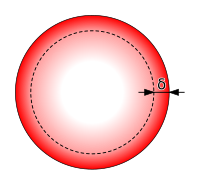
Photo from wikipedia
In this paper, we study the post-fabrication phenomenon of natural oxidation of the Ti layer observed in a Pt/HfO2/Ti/Pt Resistive Random Access Memory (OxRRAM) stack with no external influence. We… Click to show full abstract
In this paper, we study the post-fabrication phenomenon of natural oxidation of the Ti layer observed in a Pt/HfO2/Ti/Pt Resistive Random Access Memory (OxRRAM) stack with no external influence. We identify that the resistance ratio decreases by 100 × in a month time period due to the natural oxidation of the Ti layer in contact of the HfO2 layer. We then propose two paths to control both the final properties of the device and the aging process. The first approach consists in carefully optimizing the thickness of the Ti layer to reduce the aging effect. However, the resistance ratio is proportional to the thickness of the layer, leading to an unwanted trade-off between device properties and aging effect. The second approach consists in adding a TiO2 inter-layer, creating a Pt/HfO2/TiO2/Ti/Pt OxRRAM stack that is more stable over time with similar resistive states. The obtained OxRRAM stack presents a resistance ratio in the order of 104 with no observable post-fabrication aging degradation.
Journal Title: Journal of Electroceramics
Year Published: 2017
Link to full text (if available)
Share on Social Media: Sign Up to like & get
recommendations!